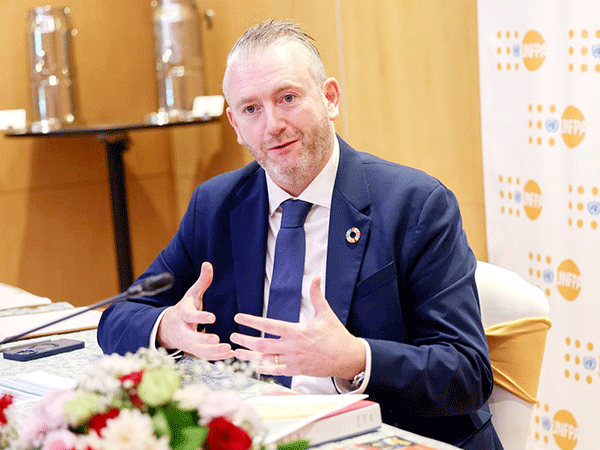 |
| Mr Pio Smith says every dollar invested in family planning, nutrition, maternal, newborn, child, and adolescent health can yield a US$6 economic return. |
UNFPA’s regional chief: Smart investment will maximise demographic dividend
UNFPA’s Regional Director for Asia and the Pacific has highlighted the need for Laos to invest urgently and smartly in its young people, with special attention placed on girls and young women to fully capitalise on its demographic dividend.
Mr Pio Smith said the next 20 years are critical and require immediate, concerted action across all sectors to transform the country’s youth into a powerful driver of economic growth.Half of the Lao population is under 25 and half of that number is girls, highlighting the country’s demographic potential if appropriate investment is made.
“It’s a decisive moment. Delays in strategic investments mean losing out on an opportunity of immense potential for national growth,” he said.
The director spoke to the Vientiane Times in an exclusive interview during his attendance at the second National Conference on Population and Development, which took place in Vientiane last week.
He stressed that investing in youth and child health to enable this vital segment of the population to reach their full potential can bring significant benefits.
The director cited UNFPA studies showing that every dollar invested in family planning, nutrition, maternal, newborn, child, and adolescent health can yield a US$6 economic return, while every dollar invested in family planning can deliver a US$33 return.
Overall, scaling up investments by US$109 million could prevent over one million unintended pregnancies and yield more than half a billion dollars in economic returns over the next five years.
“These are very smart investments that must be taken,” Mr Smith said.
Key strategies recommended include preventing child marriage and adolescent pregnancies, providing quality education including vocational training to create a pathway for employment, comprehensive sexuality education, and ensuring equitable resource distribution across provinces, focusing on the poorest communities.
He pointed to rising adolescent pregnancy rates and the high number of early marriages, underlining the need for universal access to advice on reproductive health and other services in this field.
Data indicate that at least one in four girls aged 15 to 19 are married, and nearly a third of young women are married before the age of 18. Meanwhile, the number of adolescent pregnancies rose from 83 per 1,000 in 2017 to 89 in 2023.
“Early marriage is a scourge that holds girls back,” Mr Smith said, adding that the rising adolescent pregnancy rate is “worrying”.
A key to addressing this issue is investing in and empowering young people, particularly girls and young women who face societal disadvantages, in order to to equip them to become “a driver for the future of Laos”, he added.
Noting that achieving this goal is a difficult endeavour across the world, not just in Laos, the director stressed that this demands a “whole of society” approach involving governments, civil society, the private sector, and development partners working together.
He praised the Lao government’s commitments, such as family planning and its 2030 targets, midwifery action plan, and curriculum improvement to bolster the upskilling of young people.
He welcomed the Laos demographic dividend roadmap launched at the conference, describing it as an important tool for unified action and emphasing the importance of implementation.
Mr Smith also stressed the need to strengthen regional cooperation, sharing best practices within the sub-Mekong and ASEAN regions to accelerate progress, unlocking the potential of Laos’ young people.
By Souksakhone Vaenkeo
(Latest Update October 7, 2025)
|


